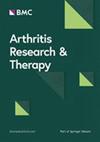Gut microbiome dysbiosis accelerates osteoarthritis progression by inducing IFP-SM inflammation in “double-hit” mice
IF 4.6
2区 医学
Q1 Medicine
引用次数: 0
Abstract
This study investigates the complex interplay between gut microbiome dysbiosis and systemic inflammation as a critical risk factor in the pathogenesis of osteoarthritis (OA). Furthermore, it elucidates the role of gut microbiota (GMB) dysbiosis in driving OA progression. A refined “double-hit” murine model was developed to explore this relationship. The first intervention involved inducing gut microbiota dysbiosis through the administration of colistin and Escherichia coli, followed by surgical destabilization of the medial meniscus (DMM) to induce joint instability. The composition of the gut microbiota was analyzed using 16 S rRNA sequencing. Gut permeability was assessed via RT-PCR and immunofluorescence (IF), while mRNA sequencing was employed to examine alterations in gene expression. Treatment with colistin and E. coli significantly altered the gut microbiota composition, characterized by a marked increase in the absolute abundance of Firmicutes and a concomitant reduction in Bacteroidota and the Bacteroidota/Firmicutes (B/F) ratio. At the genus level, the absolute abundances of Muribaculaceae, Rikenellaceae_RC9_gut_group, and Roseburia were significantly diminished. GMB dysbiosis led to the downregulation of intestinal tight junction proteins, including ZO-1 and Occludin, resulting in increased intestinal permeability. Consequently, serum levels of lipopolysaccharide (LPS) were significantly elevated, indicating LPS translocation from the gut into systemic circulation. Notably, GMB dysbiosis markedly exacerbated OA progression, as evidenced by accelerated cartilage degeneration, increased osteophyte formation, and reduced bone mineral density (BMD). The OARSI scoring system revealed that OA severity in both colistin and E. coli treatment groups was significantly higher than in the control group. Additionally, GMB dysbiosis promoted the expression of inflammation-related genes in the synovium and induced M1 polarization of macrophages, demonstrated by the upregulation of CD86 and an elevated CD86/CD206 ratio. Correlation analyses indicated that Bacteroidota and the B/F ratio were positively associated with intestinal barrier integrity and negatively correlated with OA progression. In contrast, Firmicutes exhibited a positive correlation with inflammation and OA deterioration. These findings collectively underscore the critical role of GMB dysbiosis in modulating intestinal permeability, systemic inflammation, and OA pathogenesis. The protective effects of Bacteroidota and the B/F ratio, as well as the detrimental impact of Firmicutes, highlight potential therapeutic targets for mitigating OA progression through GMB modulation.在“双重打击”小鼠中,肠道微生物群失调通过诱导IFP-SM炎症加速骨关节炎的进展
本研究探讨了肠道菌群失调和全身性炎症之间复杂的相互作用,作为骨关节炎发病机制中的一个关键危险因素。此外,它阐明了肠道微生物群(GMB)生态失调在推动OA进展中的作用。开发了一种改进的“双重打击”小鼠模型来探索这种关系。第一种干预包括通过给药粘菌素和大肠杆菌诱导肠道微生物群失调,随后手术破坏内侧半月板(DMM)的稳定以诱导关节不稳定。采用16s rRNA测序分析肠道菌群组成。通过RT-PCR和免疫荧光(IF)评估肠道通透性,同时采用mRNA测序检测基因表达的变化。用粘菌素和大肠杆菌治疗显著改变了肠道菌群组成,其特征是厚壁菌门绝对丰度显著增加,拟杆菌门和拟杆菌门/厚壁菌门(B/F)比随之降低。在属水平上,Muribaculaceae、Rikenellaceae_RC9_gut_group和Roseburia的绝对丰度显著降低。GMB生态失调导致肠道紧密连接蛋白ZO-1和Occludin下调,导致肠道通透性增加。因此,血清脂多糖(LPS)水平显著升高,表明LPS从肠道转运到体循环。值得注意的是,GMB生态失调明显加剧了OA的进展,如软骨退变加速、骨赘形成增加和骨密度(BMD)降低。OARSI评分系统显示,粘菌素和大肠杆菌治疗组的OA严重程度均显著高于对照组。此外,GMB生态失调促进滑膜炎症相关基因的表达,诱导巨噬细胞M1极化,表现为CD86上调和CD86/CD206比值升高。相关分析表明拟杆菌群和B/F比值与肠屏障完整性呈正相关,与OA进展呈负相关。相反,厚壁菌门与炎症和OA恶化呈正相关。这些发现共同强调了GMB生态失调在调节肠道通透性、全身性炎症和OA发病机制中的关键作用。拟杆菌和B/F比值的保护作用,以及厚壁菌门的有害影响,突出了通过GMB调节缓解OA进展的潜在治疗靶点。
本文章由计算机程序翻译,如有差异,请以英文原文为准。
求助全文
约1分钟内获得全文
求助全文
来源期刊

Arthritis Research & Therapy
RHEUMATOLOGY-
CiteScore
8.60
自引率
2.00%
发文量
261
审稿时长
14 weeks
期刊介绍:
Established in 1999, Arthritis Research and Therapy is an international, open access, peer-reviewed journal, publishing original articles in the area of musculoskeletal research and therapy as well as, reviews, commentaries and reports. A major focus of the journal is on the immunologic processes leading to inflammation, damage and repair as they relate to autoimmune rheumatic and musculoskeletal conditions, and which inform the translation of this knowledge into advances in clinical care. Original basic, translational and clinical research is considered for publication along with results of early and late phase therapeutic trials, especially as they pertain to the underpinning science that informs clinical observations in interventional studies.
 求助内容:
求助内容: 应助结果提醒方式:
应助结果提醒方式:


